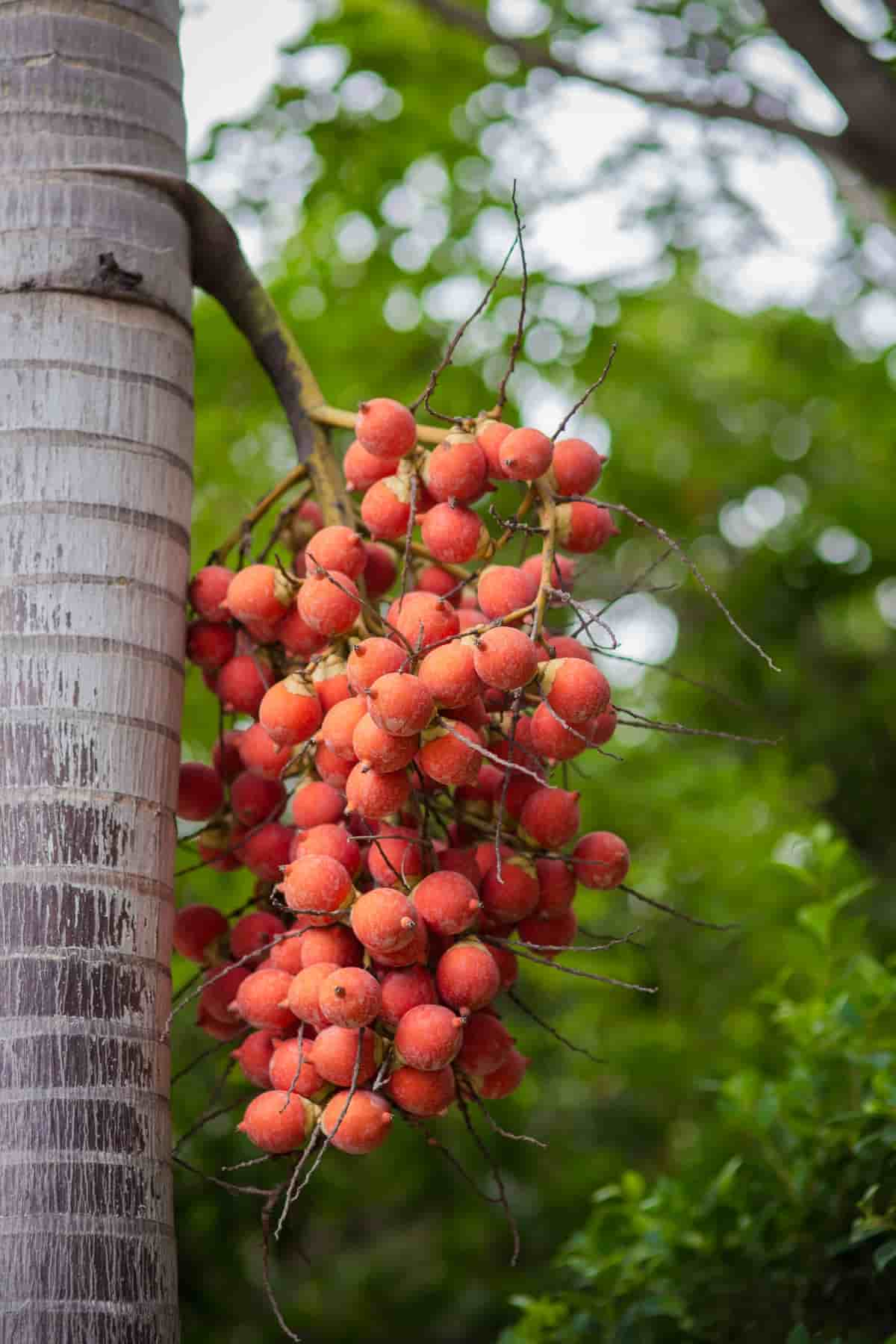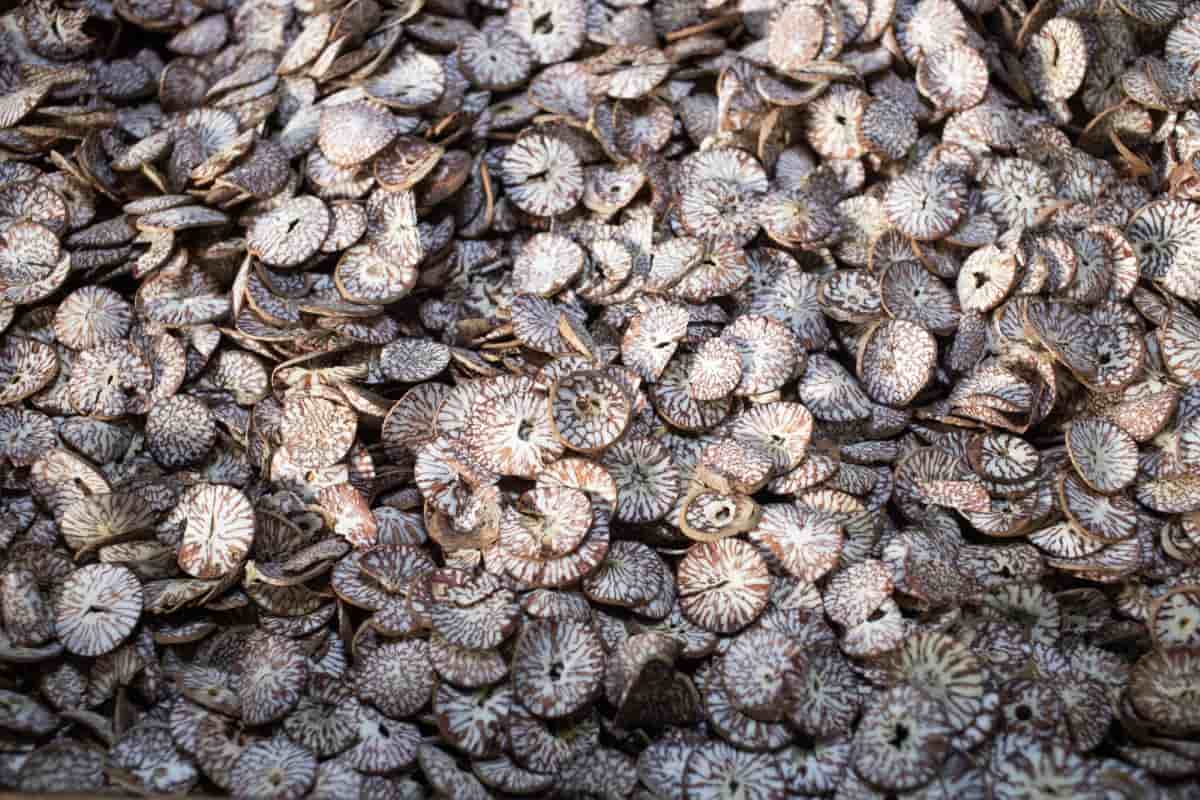The areca nut, also called the betel nut, is a fascinating fruit that comes from the areca palm family, scientifically known as Arecaceae. Different Arecanut varieties also offer varying levels of yield potential. Some varieties are known for their high yields, which can significantly increase profitability for farmers.

Factors Influencing Variety Selection
Climate and Geographic Considerations
The areca palm thrives in tropical regions and requires specific climatic conditions to grow successfully. The first factor to consider is temperature. Areca palms prefer temperatures between 25-35°C, making them suitable for regions with warm climates. They are also sensitive to frost and cannot tolerate temperatures below 10°C.
Rainfall patterns are another important consideration. Areca palms require a well-distributed rainfall of around 2000-5000 mm per year for optimal growth. Areas with high sunshine hours will provide an ideal environment for cultivating Arecanut varieties. Soil type is also a significant factor in variety selection. Well-drained loamy soils with organic matter content are considered ideal for growing Arecanut trees.
Market Demand and Regional Preferences
Farmers need to consider the demand for different varieties in their region before making a decision. Understanding market trends and preferences can help farmers maximize their profits and ensure a steady demand for their produce. Different regions have varying preferences when it comes to Arecanut Varieties. Additionally, market demand plays an important role in determining the profitability of growing certain Arecanut Varieties.
Popular Arecanut Varieties
Identification and Description
One such variety is the Mangala, which is known for its high-yield potential. It has a medium-sized nut with good taste and texture. Another popular Arecanut variety is the Sumangala, which also offers high yields and has excellent disease resistance. For those looking for a larger nut size, the VTL (Vittal Tall) variety is a great choice. It produces large nuts with good quality and taste. The Mohitnagar variety, on the other hand, is preferred by many farmers due to its ability to adapt well to different climatic conditions.
The Ratna variety stands out for its early maturation and high productivity. It produces small-sized nuts but compensates with its faster growth rate. Thirthahali, Sree Varjdhan or Rotha, Mettupalayam, Kahikuchi, Mohitnagar, Mangala (VTL – 3), and Sumanagala (VTL-11), etc. are other important Arecanut varieties.
Yield Potential of Arecanut Varieties
Varietal Differences in Crop Yield
There are several high-yielding Arecanut varieties available in the market today. These varieties have been specifically bred and developed to produce abundant crops, ensuring a bountiful harvest for farmers. Each variety has its unique characteristics when it comes to crop yield.
Some may be more productive than others in certain climatic conditions or geographic locations. By choosing the right variety based on these factors, farmers can maximize their chances of achieving higher yields and reaping greater profits from their Arecanut plantation. Furthermore, some varieties also exhibit better disease resistance and tolerance compared to others.
High-Yielding Arecanut Varieties
By opting for high-yielding Arecanut varieties, you can ensure a more profitable harvest. One such high-yielding variety is the ‘Sumangala,’ which is known for its exceptional yield potential. Another popular choice is the ‘Mangala’ variety, which also exhibits excellent yield potential along with disease resistance.
In case you missed it: How to Grow Areca Palms Outdoors and Indoors: Benefits, Propagation, Pruning, and Reaching Height

Disease Resistance and Tolerance
Varieties with Disease Resistance
Diseases can greatly affect the yield and quality of your crop, so selecting a variety that can withstand or resist common diseases is essential. Different varieties exhibit varying levels of resistance to diseases such as leaf spot, bud rot, and stem bleeding. Some varieties are known for their resilience against these infections, while others may be more susceptible.
By opting for Arecanut varieties with high disease resistance, farmers can reduce the risk of significant losses due to disease outbreaks. These resistant varieties not only offer protection from pathogens but also require less intensive management practices like reduced pesticide application.
Managing Pest and Disease Risks
Pests and diseases can wreak havoc on Arecanut plantations, causing significant damage to the crop yield. Therefore, farmers must implement effective strategies to manage these risks. One approach is to select Arecanut varieties that display resistance or tolerance to common pests and diseases prevalent in their region. Regular monitoring of the plantation is also essential in identifying early signs of pest infestation or disease development. Additionally, promoting natural predators by creating suitable habitats within the plantation can help control pest populations naturally.
Nut Quality and Size
Varietal Differences in Nut Characteristics
Each variety has its own unique set of qualities when it comes to nut size, color, shape, and taste. Some varieties may produce larger nuts that fetch higher prices due to their visual appeal and perceived value. On the other hand, smaller-sized nuts might be preferred by certain consumers for specific uses or cultural practices. To identify the best-suited variety for your specific requirements, consultation with agricultural experts or experienced farmers is highly recommended.
Nut Size and Market Preferences
The size of the nuts produced by different varieties of areca palm plays a crucial role in determining their market value. While some consumers prefer larger nuts for their aesthetic appeal, others may prioritize smaller nuts for ease of consumption. Market demand also varies depending on cultural factors and regional preferences. Farmers need to consider these factors when choosing which variety to grow to maximize their profits.
Growing Conditions and Soil Compatibility
Varieties Suited to Different Soil Types
Areca palms thrive in a wide range of soils, but certain varieties have specific preferences for optimal growth and yield. Sandy loam soils are ideal for most areca nut varieties as they provide good drainage while retaining enough moisture for the plants’ needs. On the other hand, clayey or heavy soils may not be suitable for all varieties as they tend to retain more water and become compacted. However, some robust cultivars have shown adaptability even in heavier soils.
Adaptability to Local Growing Conditions
Every region has its own unique climate and soil characteristics, which can greatly impact the success of your Arecanut plantation. Different Arecanut varieties have varying levels of tolerance to different climates and soil types. Some varieties thrive in hot and humid environments, while others prefer cooler temperatures.
By selecting a variety that is well-adapted to your specific local conditions, you can maximize the chances of achieving higher yields and ensuring the overall health of your crop. Consulting with agricultural experts or experienced farmers in your area can provide valuable insights into which Arecanut varieties have performed well historically in similar growing conditions.
Arecanut Variety Selection Tips
Consultation with Agricultural Experts
Consulting with agricultural experts allows you to tap into their expertise in understanding various factors that influence variety selection. Market demand and regional preferences also play a significant role in determining which Arecanut varieties will yield higher profits. Nut quality and size are essential factors when it comes to meeting market preferences. Agricultural experts can advise on variabilities in nut characteristics among different Arecanut varieties so that you select those with desirable qualities for consumers.
Farmer Experiences and Recommendations
In their experiences, many farmers have found that certain varieties exhibit better disease resistance than others. This is crucial in reducing crop losses and ensuring a healthy harvest. Through trial and error, these farmers have identified specific varieties that withstand common diseases, such as bud rot or leaf spot, allowing them to minimize pesticide use and increase profitability.
In case you missed it: Best Intercrop for Areca Nut: Exploring Intercropping Options for Areca Nut Plantations

Furthermore, farmers often consider market demand when selecting an Arecanut variety. By understanding regional preferences and consumer trends, they can grow nuts that fetch premium prices in the market.
Managing Varietal Diversity
Crop Diversification Strategies
Crop diversification is a key strategy in managing varietal diversity for Arecanut cultivation. By introducing different varieties of Arecanut in your plantation, you can minimize the risks associated with relying on a single variety. One approach to crop diversification is through mixed plantations. This not only helps maximize land utilization but also creates a more balanced and sustainable farming system.
Another strategy is to stagger the planting of different Arecanut varieties within the same plantation. Additionally, it’s important to consider regional preferences and market demand when selecting diverse varieties for your plantation. Understanding consumer preferences will help ensure that your crop aligns with market demands, ultimately leading to better profitability.
Mixed Plantations for Balanced Yields
In a mixed plantation, multiple Arecanut varieties are grown together in the same field. This helps in optimizing resource utilization and also promotes natural pest control and enhances overall plant health. Growing different varieties together allows for efficient use of nutrients present in the soil since each variety has specific nutrient requirements.
In case you missed it: Areca Nut Profit Per Acre: Cost of Cultivation, Planting Distance, Intercrops, and Yield

Conclusion
With various factors influencing variety selection, farmers must choose the right varieties that suit their specific climate and geographic conditions. Growing different Arecanut varieties brings various benefits, such as meeting market demands, increasing yields through high-yielding cultivars, and providing options for disease-resistant nuts with desirable qualities.
- Ultimate Guide to Ossabaw Island Hog: Breeding, Raising, Diet, and Care
- Ultimate Guide to Juliana Pig: Raising Facts, Size, Diet, Care, and Lifespan
- Raising Lleyn Sheep: Disadvantages, Price, Uses, Characteristics, and Care
- Ultimate Guide to Meishan Pig: Breed Facts, Breeding, Raising, and Care
- Ultimate Guide to Teacup Pigs: Raising, Diet, Lifespan, Cost, and Care
- Guide to Raising Poll Dorset Sheep: Facts, Profile, Characteristics, Uses, and Care
- Ultimate Guide to Bighorn Sheep: Characteristics, Diet, Lifespan, Breeding, and Lifecycle
- Ultimate Guide to Raising Katahdin Sheep: Farming Facts, Breed Profile, Uses, and Care
- Ultimate Guide to Raising Oreo Cows: Belted Galloways Farming Facts, Profile, Uses, and Care